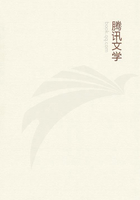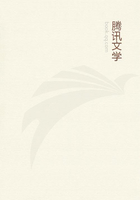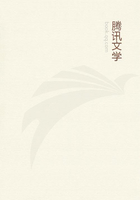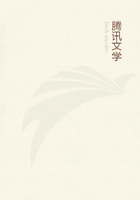Ovate to cylindrical, 5 to 15 cm. high, 2.5 to 5 cm. in diameter, simple or branching at base: tubercles short-ovate from a broad base, 5 to 6 mm. long, deeply grooved, crowded and imbricate, at length covering the older parts as naked and gray corky protuberances: radial spines 20 to 30, slender but stiff, white, radiant and interwoven with adjacent clusters, 4 to 8 mm. long (uppermost rarely 10 to 12 mm.); central spines 5 to 9, stouter, purplish above, the upper ones longer, erect, 10 to 14 mm. long (sometimes even 16 to 18 mm.), the lower one shorter (6 to 8 mm.), stout, porrect or deflexed: flowers about 2.5 cm. in diameter, pale purple: fruit oval, elongated (sometimes almost cylindric), red, about 18 mm. long: seeds subglobose, brown and pitted, very small (0.8 to 1.2 mm. long).(Ill. Cact. Mex. Bound. t. 12. figs. 1-16)Type of Scheer's strobiliformis is unknown; but the specimens of Prince Salm-Dyck in Herb. Mo. Bot. Gard. are marked "authentic" by Dr. Engelmann.The Wright specimens in the same Herb, represent the type of M tuberculosa Engelm.
From the mountains of extreme southwestern Texas (common west of Devil's River), southward into Chihuahua and Coahuila.Fl. May-June.
Specimens examined: Texas (Wright 18, 19, 20, 23, 24, 29, 30,31,32,535, of 1849 and 1852; Bigelow of 1852; Engelmann, with no number ordate; Evans of 1891): Chihuahua (Pringle 250, 251 in part, and 258 of 1885): Coahuila (Palmer of 1880): also specimens from Coll. Salm. Dyck in 1857; also growing in Mo Bot. Gard. 1893 (specimens, sent by G. G. Briggs in 1892 from El Paso, Texas.
The identification of Engelmann's tuberculosa with Scheer's strobiliformis was made by Dr. Engelmann himself upon an examination of Scheer's type.The use of the specific name tuberculosa is necessitated by the law of homonyms, as strobiliformis had been used twice already before it was taken up by Scheer.M. strobiliformis Muhlenpf. is C.
scolymoides sulcatus; and M. strobiliformis Engelm. is C. conoideus.
57.Cactus viviparusNutt. in Fraser's Cat. (1813).
Mamillaria viviparaHaw. Syn. Succ. Suppl. 72 (1819).
Low and depressed-globose, usually proliferous and cespitose (forming large masses), but sometimes simple: tubercles terete and loose, lightly grooved: radial spines 12 to 20, stiff and white, often dark-tipped, 6 to 8 mm. long; central spines usually 4 (sometimes less, often more, even as many as 8), brownish, 8 to 12 mm. long, 3 spreading upwards, the lowest stouter and shorter and deflexed: flowers about 3.5 cm. long (large for the size of the plant) and even broader when expanded, bright purple: stigmas pointed with a short mucro: fruit oval, pale green, juicy, 12 to 18 mm. long: seeds yellowish-brown, obliquely obovate and curved about the small hilum, 1.4 to 1.6 mm. long).(Ill. Cact. Mex. Bound. t. 74. fig. 3, seeds)Type unknown.
On the northwestern plains, from the boundary provinces of British America (western Manitoba, Assiniboia and Alberta), and throughout the Upper Missouri region, southward through western Nebraska to western Kansas and to the eastern foothills of central Colorado.It is also mentioned by Howell (Cat. of Oregon, Washington and Idaho plants), as occurring beyond the Rocky Mountain divide in Idaho and Washington, which is probable, but no specimens have been seen.
Specimens examined: Montana (Hayden, nos. 1854, 1855; Vernon Bailey of 1890, near Bridger): Colorado (Hayden of 1869): Nebraska (Rydberg 1379 of 1893, Thomas Co.): also specimens cultivated in St. Louis in 1869; also growing in Mo. Bot. Gard. 1893.
It seems best to keep this northwestern form specifically separate from that large assemblage of southern forms that have been commonly referred to it.The forms referred to this species from western Kansas (Smyth's check list) have not been examined, and they may represent intermediate forms, inclining to simple habit and ovate form, as in the Colorado forms.The southern type (C. radiosus) is distinguished from C. viviparus not only by its very different range, but also by its ovate to cylindrical form, simple habit, more numerous (12 to 40) and longer (6 to 22 mm.) radial spines, usually more numerous (3 to 14) central spines in which theupper are more robust than the lower, porrect lower central, obtuse stigmas, and brown obovate straight seeds.
58.Cactus radiosus (Engelm.).
Mamillaria viviparaEngelm. Pl. Fendl. 49 (1849), not Haw. (1819). Mamillaria radiosaEngelm. Pl. Lindh. 196 (1850). Mamillaria vivipara radiosa texanaEngelm. Syn. Cact. 269 (1856).
Ovate or cylindrical, 5 to 12.5 cm. high and about 5 cm. in diameter, simple or sparingly proliferous: tubercles terete, more or less grooved above, 8 to 12 mm. long: radial spines 20 to 30, straight, slender, with with dusky apex, very unequal, 6 to 8 mm long; central spines 4 or 5, stouter, yellowish or tawny, 8 to 12 mm. long, the upper ones the longer and more robust, the lowest one shorter and porrect: flowers 3.5 to 5.5 cm. long, about the same diameter when fully open, violet to dark purple: stigmas 7 to 9, obtuse: fruit oval and green: seeds yellowish or brown, obovate, pitted, fully 2 mm, long.(Ill. Cact. Mex. Bound. t. 74, fig.5, seeds)Type, Lindheimer of 1846 in Herb. Mo. Bot. Gard.
Extending across southern Texas, from the Guadalupe to El Paso. thence into contiguous New Mexico and across the Rio Grande near Juarez (northern Chihuahua).Fl. May-June.
Specimens examined: Texas (Lindheimer of 1846): New Mexico (Bigelow of 1855): Chihuahua, near Juarez (Evans of 1891): also specimens cultivated from the type in St. Louis in 1846.
Attention has been called under C. viviparus to the characters that distinguish from C. radiosusThe characters there given for the latter species apply to to the whole group of included forms. The type of the species is the var. Texana of Engelmann's Syn. Cact. and Mex. Bound., which is characterized in the above. description.
59.Cactus radiosus neo-mexicanus(Engelm.).















